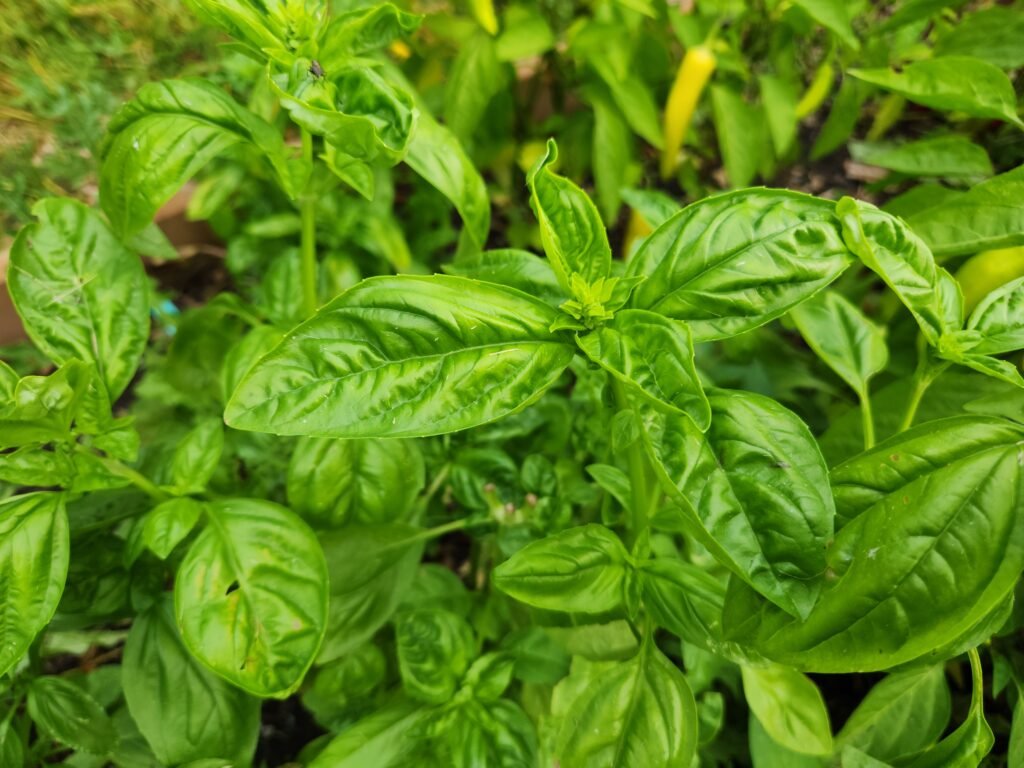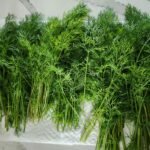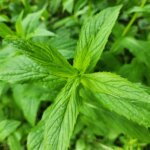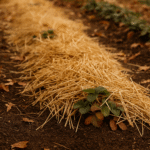Basil is one of those herbs I can’t imagine gardening without. Whether it’s for cooking, companion planting, or just brushing passed it and catching that fresh, peppery scent—basil earns its keep in our garden year after year. In this post, I’m going to walk you through exactly how to grow basil from seed, all the way to harvesting and preserving it, based on what we’ve learned in our more than last five years of growing it ourselves.
This post may contain affiliate links. If you use these links to buy something we may earn a commission. Thanks.
We always start basil from seed in early spring, and once the seedlings are established, they go into the garden. From there, we propagate even more basil from cuttings. Our goal is usually to have at least 15 to 20 basil plants spread throughout the garden. We use it fresh all summer long, make big batches of pesto to freeze for winter, and dehydrate a good stash for dried herbs too.

So if you’re wondering how to grow basil and get a steady, flavorful supply all season long, you’re in the right place. Let’s dig in.
How to Grow Basil From Seed Successfully
To grow basil from seed successfully, you’ll need warm temperatures, strong light, and a little patience. Basil is a heat-loving herb, and most seed-starting failures happen when conditions are too cool or light is insufficient.
In order to grow basil from seed, you’ll need:
- Fresh, viable basil seeds
- A high-quality seed-starting mix
- A warm location to encourage fast germination
- A sunny window or grow lights providing 12–14 hours of light per day
Once these basics are in place, basil seeds germinate quickly and seedlings grow fast. From germination through transplanting, maintaining consistent warmth and light is the key to strong, healthy basil plants.
Below, we’ll walk through each step, from planting basil seeds to harvesting fresh leaves all season long.
What Do Basil Seeds Look Like?
It doesn’t matter what kind of basil seeds you’re planting, they all look alike. Basil seeds are very small, round, black seeds only a few millimeters in size.
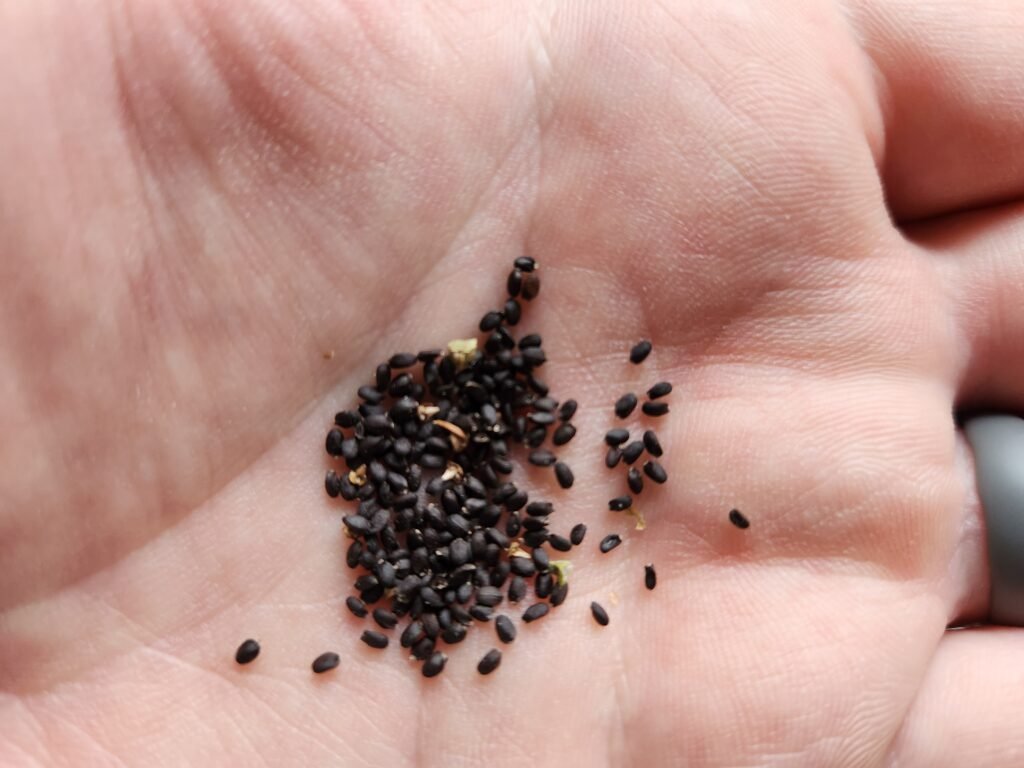
Common Basil Varieties to Grow:
There’s a surprising amount of variety when it comes to basil, and each type has its own unique flavor, aroma, and ideal use in the kitchen or garden. Over the years, we’ve experimented with quite a few, and it’s always fun to try a new one each season. If you’re learning how to grow basil, knowing which varieties to plant is a great place to start.
For the best results use fresh basil seeds. The easiest way to ensure your seeds are fresh and that you don’t run out of a variety you enjoy, is to save them yourself. If you would to learn how, I’ve written another article that goes into how to save basil seeds.
Here are some of the most popular and easy-to-grow types of basil for the home garden:
Genovese Basil
This is the classic Italian basil most people think of and the one that we grow in our home garden. It has large, tender leaves and that signature sweet, peppery flavor—perfect for pesto, Caprese salad, and fresh pasta dishes. If you’re only growing one variety, this is the one to start with.
Thai Basil
With its spicy, licorice-like flavor and purple stems, Thai basil is a staple in Southeast Asian cooking. It holds up better than sweet basil when cooked, making it great for stir-fries and soups like pho.
Lemon Basil
As the name suggests, this basil has a strong citrus scent and flavor. It’s great for teas, fish dishes, or adding a twist to your summer salads. The aroma alone is worth growing it for.
Purple Basil
This variety is striking in the garden with its deep purple leaves. It has a slightly spicier flavor than sweet basil and makes a gorgeous garnish. Use it the same way as Genovese, or add it to herb vinegars for visual appeal.
Holy Basil (Tulsi)
Sacred in many cultures, this basil has a clove-like aroma and is commonly used in herbal teas and natural remedies. It’s also a pollinator magnet, making it a great addition to a wildlife-friendly garden.
Greek Basil
This compact, bushy variety has small leaves and a strong flavor. It’s perfect for containers or for planting along garden borders where space is tight. Despite its size, it packs a punch in flavor.
What Time Of Year Should I Plant Basil?
Basil is an annual plant. This means that it will go through it’s full life cycle in one growing season and need to be replanted the next year. Because of this, start basil in the spring. Either indoors 6-8 weeks before your last frost date, or outdoors after all threat of frost has passed.
Basil can be harvested using the cut and come again method or by harvesting the whole plant. If you’re harvesting the whole plant make sure to succession plant every 4 weeks so you’ll have plenty of basil all summer long.
For the cut and come again method you can over winter your basil indoors using a south facing window or grow lights. To do this, dig up the entire plant and full root system and re pot it or cut of some cuttings and propagate a fresh basil plant for indoors.
How Do You Plant Basil Seeds?
Since basil seeds are very small they do not need to be planted very deep. Make sure you are using a high quality potting soil or seed starting mix and get the soil moist before planting.
The easiest way we have found to sow basil seeds is to sprinkle them on the soil surface and then get some extra seed starting mix and spread it on top. This way you will know that the seeds are covered but only by a small amount of soil.

A general rule for any seed starting is to never plant the seeds deeper than twice the diameter of the seed itself.
Can You Direct Sow Basil Seeds?
Yes, basil can be directly sowed in the garden. After the threat of a frost passed. Follow the same steps as if you were starting the seeds indoors. Sprinkle on the soil surface, and lightly cover with soil and water in.
How Long Do Basil Seeds Take To Germinate?
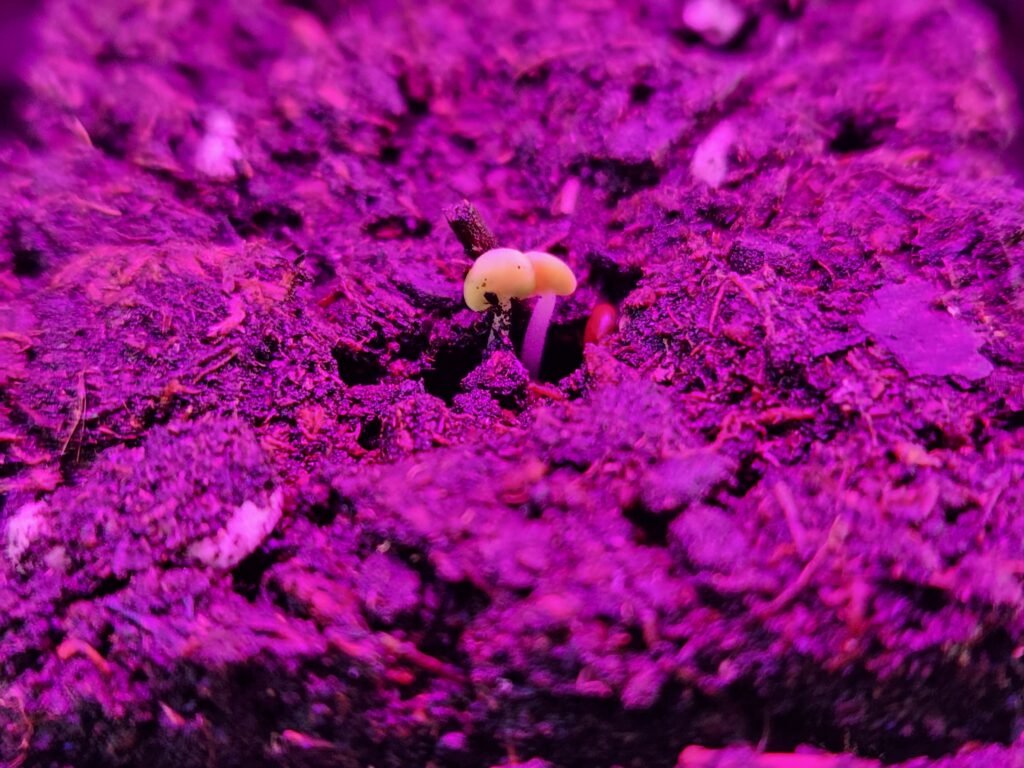
Basil typically takes 7-14 days to germinate. When using the assistance of a heat mat in conjunction with humidity domes that time can be reduced to as little as 3 days.
This is our go to method for germinating any warm weather crop. Basil germinates the best when the soil temperature is between 75 and 85°F.
How Long Does Basil Take To Grow From Seed?
For the purposes of transplanting germinated seeds, it will take 6-8 weeks. Harvesting basil can start as soon as it has enough leaves to harvest.
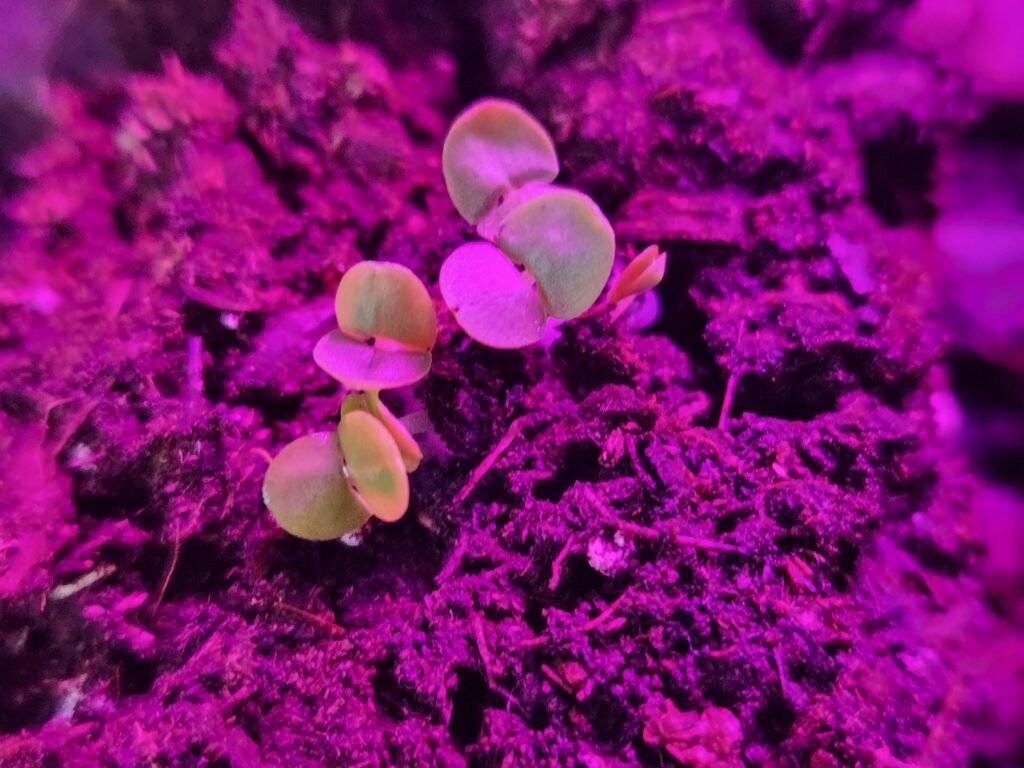
When Can Basil Plants Be Transplanted?
Basil plants can be transplanted outside when the risk of frost in your area has passed. For example, we are in zone 5b and our last frost date is May 10th. We wait a couple extra weeks to make sure there is no risk of frost and plant our basil outdoors at the end of May.
How To Transplant Basil Seedlings?
When transplanting basil seedlings, you must find the right location. Ask yourself these questions:
How Big Does A Basil Plant Need To Be To Be Transplanted?
Basil plants can be transplanted when they are still relatively small. After 6-8 weeks of growth the seedling should be a few inches tall which is more than enough for transplanting.
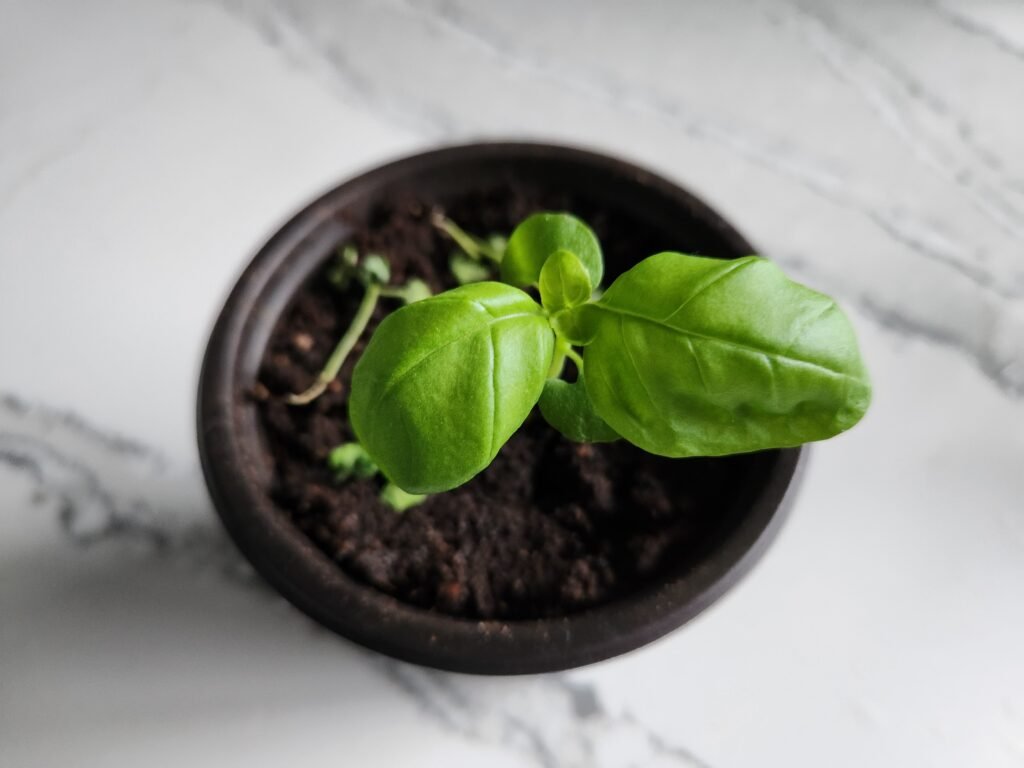
How Much Sun Does Basil Need To Grow?
Basil is a sun loving plant. It requires 6-8 hours of sun a day for optimal growth.
What Kind Of Soil Does Basil Need?
Soft, loamy, well draining soil is ideal for basil to thrive. Make sure there is lots of organic matter by adding fresh compost or well aged manure before planting.
What Are Companion Plants For Basil?
One almost obvious companion plant for basil is tomatoes. Some other common garden plants that would make a good companion for basil are: Carrots, Celery, Cucumber, Garlic, Marigolds, Nasturtium, Onion, Parsley, Sage, and Thyme.
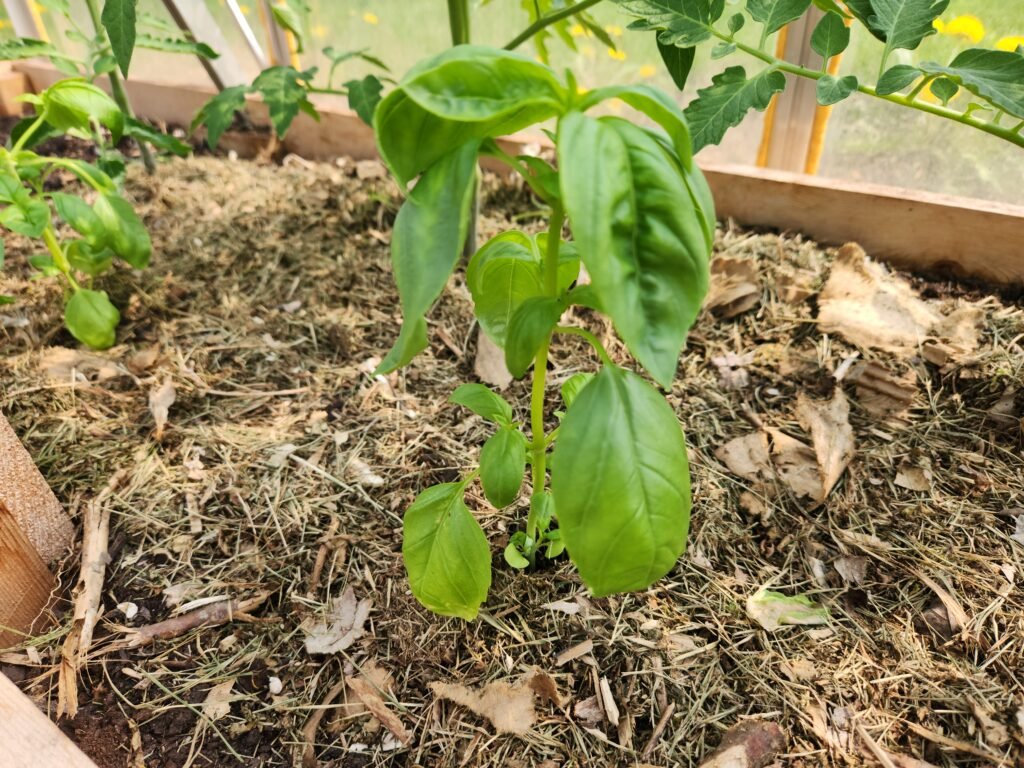
How Much Space Does Basil Need To Grow?
Basil requires 12-18 inches between plants when planting a bunch of basil together. Depending on what you’re planting basil with the actual spacing needed could be higher or lower.
One of our favourite things to do is plant basil between our tomato plants. Our basil plants are only about 9 inches from the tomato plant, but as the tomato grows and gets pruned the lower branches are removed which creates more space for the basil.
How Deep Should I Plant Basil?
If you’re growing tomatoes you’ve probably heard that it’s best to transplant seedlings as deep as possible. The same is true for basil. When transplanting a basil seedling bury the stem. It will grow new roots, just like it does if you propagate basil, making the plant even more sturdy.
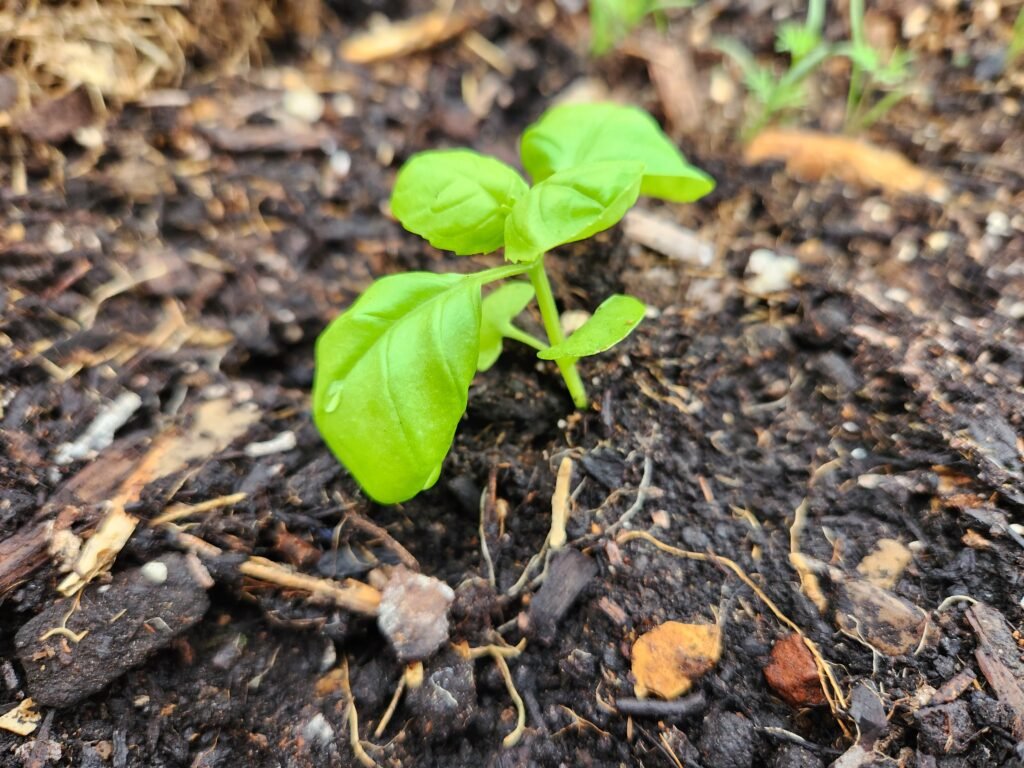
How To Take Care Of Basil Plants?
How To Water Basil:
Basil are water lovers. They require at least 1 inch of water per week.
Fertilizing Basil:
Fertilize basil using a standard 20 20 20 fertilizer. Basil requires lots of nitrogen to create all those beautiful green leaves.
Mulching Basil:
Mulching your basil plants is a needed step to reach its full potential. We love to use grass clippings as a free and readily available mulch for our basil.
Can Basil Be Grown In A Pot?
Basil does really well grown in a pot. It doesn’t have an extremely large roots structure which makes it well suited for container growing. Use a container that is at least 6 inches wide and 8 inches deep.
Can You Grow Basil Indoors?
Basil also does well indoors. A south or west facing window will give enough sun for your basil to thrive indoors. Make sure it gets at least 6 hours of sun per day and if needed supplement sunlight with a grow light.
How To Harvest Basil?
Harvesting basil is a very simple procedure. Once the basil plant is large enough that you have a usable amount of basil leaves there are two way you can harvest.
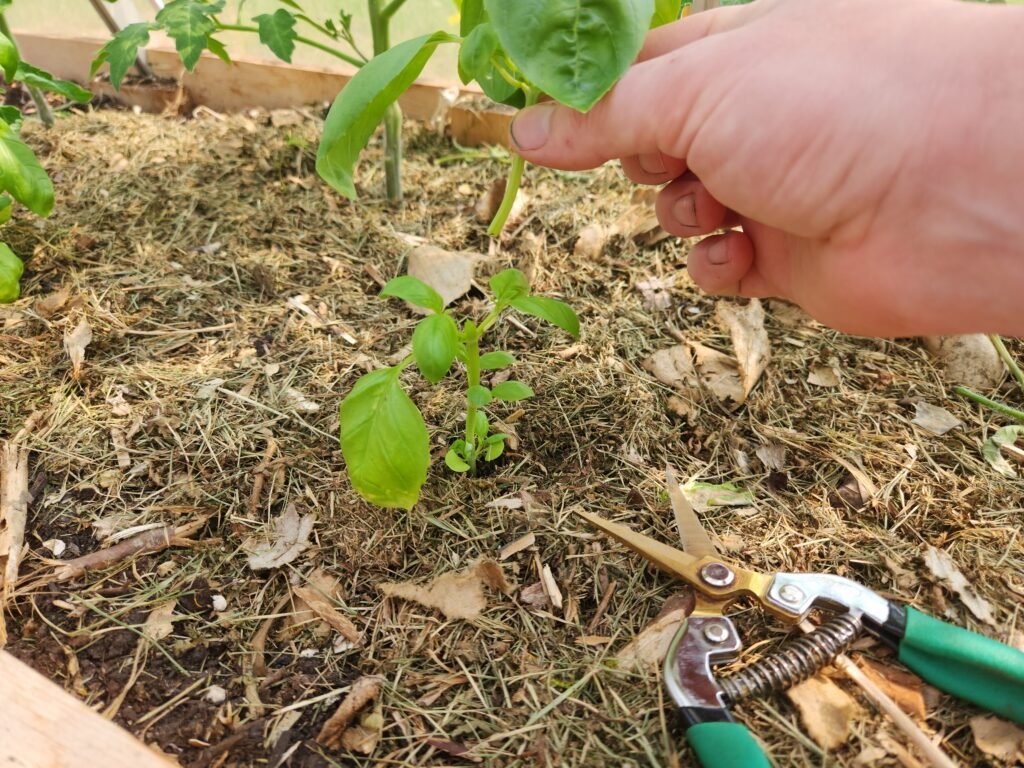
Either remove individual leaves from the branches or cut the whole stem above a junction point to use all the leaves from the cut portion.
How To Harvest Basil So It Keeps Growing?
This is very easy to accomplish. As long as you leave the roots intact and a few new growth shoots on the plant the basil will continue to grow. See below for example of where to harvest.
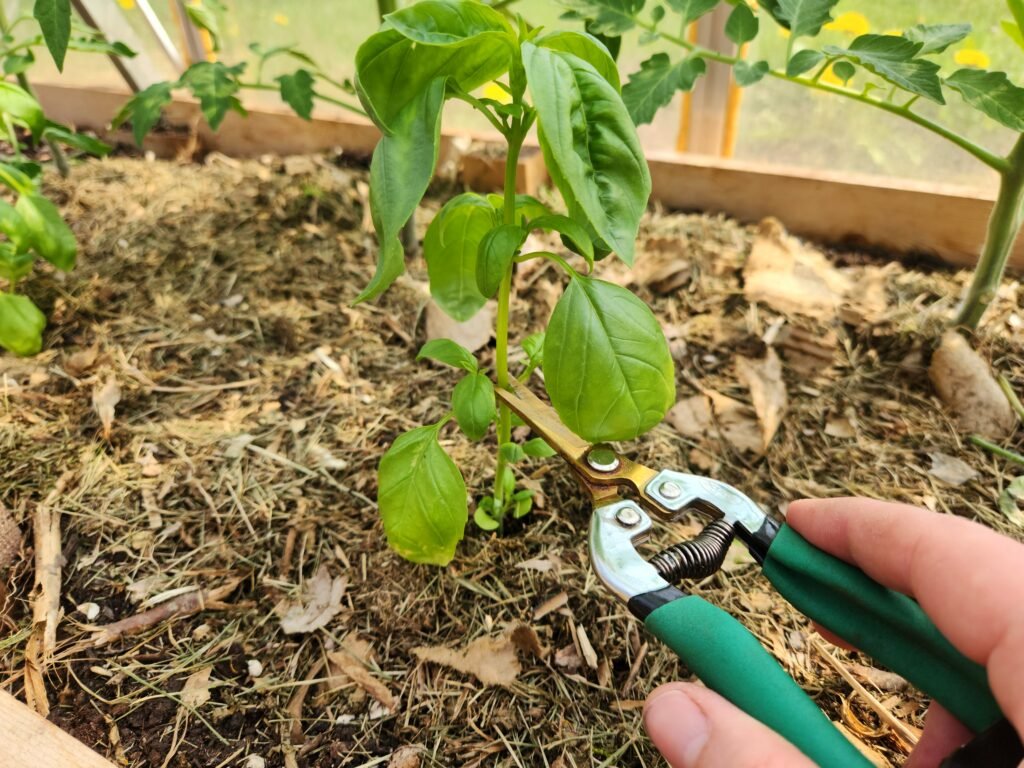
How To Store Basil?
Storing basil can be accomplished in a few different ways. The main two ways are dried and frozen. Either way you do it make sure to wash your basil leaves in cold water before processing.
How To Freeze Basil For Storage?
Our favourite way to freeze basil is to make a fresh pesto and freeze it in single serving sizes using a silicon muffin pan for easy use. Another way to freeze is to use a food processor or blender and blend the basil with a little bit of olive oil.
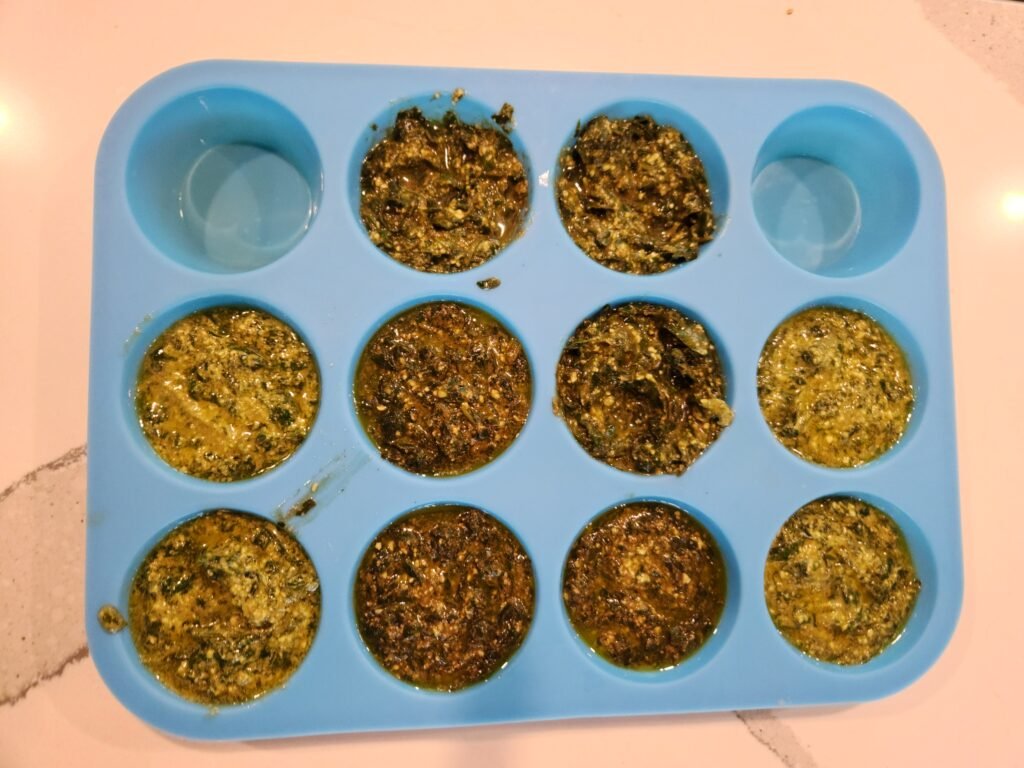
Portion the basil into ice cube trays or muffin tins, and freeze. Store them in the freezer in a freezer bag and grab some basil when needed.
How to Dry Basil Leaves?
There are three different way you can dry basil leaves. Some are easier, and some are cheaper, than other. The fastest way, but also the most expensive is to use a dehydrator. Simply remove the leaves from the stems and place in a single layer in the dehydrator. Dehydrate at your machines lowest setting until leaves are dry and “crispy”
Another way to dry basil is to use the power of the sun. Remove the leaves from the stem and place in a single layer on a tray or baking sheet. Put the tray in a sunny area to allow the sun to dry the leaves. This will take a few days to fully dry out.
The third way is to leave the leaves of the stem. Put all the stems together into a bunch and tie the stems using a string. The hang the basil upside down in a warm dark area until dry. This way takes the longest but is probably the oldest way to do it.
FAQ: How to Grow Basil From Seed
Basil typically takes 6–8 weeks to grow from seed to transplant size. You can begin harvesting small amounts of basil earlier, once the plant has several sets of leaves.
Basil seeds usually germinate in 7–14 days. When soil temperatures are kept between 75–85°F using a heat mat, germination can happen in as little as 3–5 days.
Basil seeds are very small, round, and black. Because of their size, they should be planted shallowly and only lightly covered with soil.
Yes, basil is one of the easiest herbs to grow from seed. As long as it has warm soil, plenty of light, and consistent watering, basil germinates and grows quickly.
Basil seedlings should be transplanted after all risk of frost has passed and nighttime temperatures remain above 50°F. In zone 5b, this is typically late May.
Yes, basil can be direct sown once the soil has warmed and frost danger has passed. Germination outdoors may take longer than indoors due to cooler temperatures.
Slow growth is usually caused by low temperatures, insufficient light, or nutrient-poor soil. Basil grows best with warm conditions and at least 6–8 hours of sunlight per day.
Conclusion:
Basil is a great herb to have in your garden, kitchen, and pantry. Follow the steps above and you will no doubt grow and abundance of basil this year.
We hope you enjoyed this growing guide. If you did make sure you check out the other growing guides, seed saving guides and our recipes. We are growing our website with more articles all the time, and we invite you to grow with us. If you have any questions about basil or would like to share some of your knowledge with us please leave a comment below.

